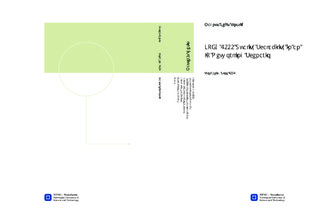JPEG 2000 Quality Scalability in an IP Networking Scenario
Master thesis
Permanent lenke
http://hdl.handle.net/11250/2370475Utgivelsesdato
2012Metadata
Vis full innførselSamlinger
Sammendrag
In this thesis, the JPEG 2000 quality scalability feature was investigated in thecontext of transporting video over IP networks. The goals of the investigation wastwo-fold. First, it was desired to nd a way of choosing the number of quality layersto embed in a JPEG 2000 codestream. In previous work, this choice has been moreor less arbitrary. Second, it was desired to nd how low the video bitrate could bedropped before it became perceptible to a viewer. This information can be usedin an IP networking scenario to e.g. adapt the video bitrate blindly according tothe measured channel capacity as long as the drop in bitrate is expected to beimperceptible. When the drop in bitrate is expected to be perceptible, a switchcould be made to a smoother bitrate adaptation.A way of choosing the total number of quality layers to embed in a codestreamwas found by minimizing the dierence in predicted quality between direct andscaled compression. Scaled compression is the compression which is achieved byextracting quality layers. The minimization procedure was bound by the speed ofthe encoder, as it takes longer for an encoder to embed more quality layers. It wasfound that the procedure was highly dependent on the desired bitrate range.A subjective test was run in order to measure how large a drop in video bitrate hadto be for it to become perceptible. A newly developed JPEG 2000 quality layerscaler was used to produce the dierent bitrates in the test. The number of qualitylayers to embed in codestream was found by using the minimization procedurementioned above. It was found that, for the bitrate range used in the test, 2 - 30Mbits/s for a resolution of 1280x720 at 25 frames per second, the magnitude ofthe drop in bitrate had to be at least 10 Mbits/s before the participants in the testnoticed it. A comparison with objective quality metrics, SSIM and PSNR, revealedthat it was very dicult to predict the visibility of the drops in bitrate by usingthese metrics. Designing the type of rate control mentioned in the rst paragraphwill therefore have to wait until a parameter with good predictive properties canbe found.
